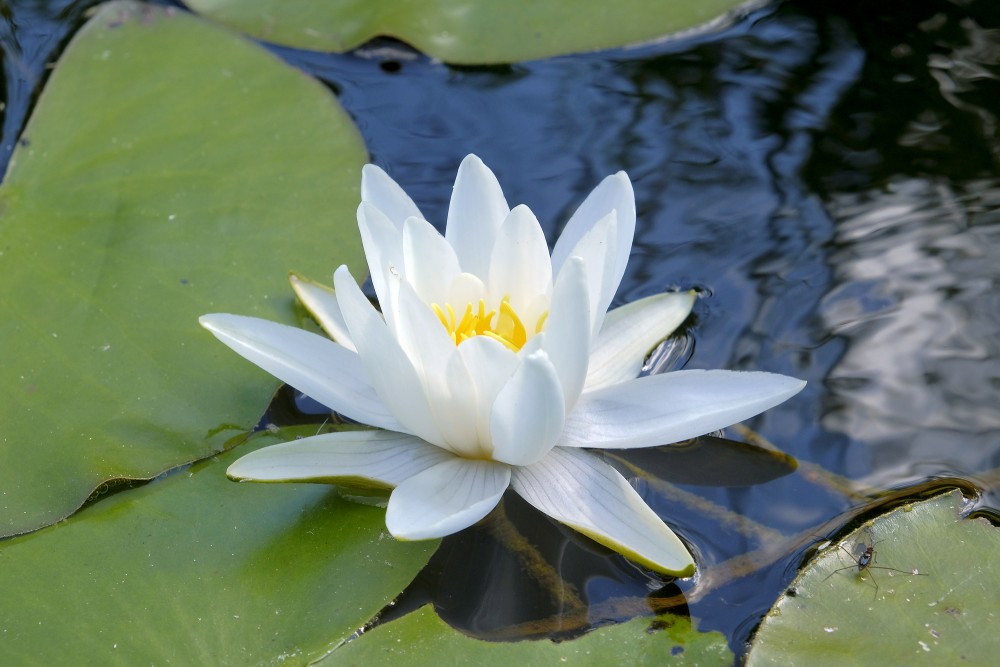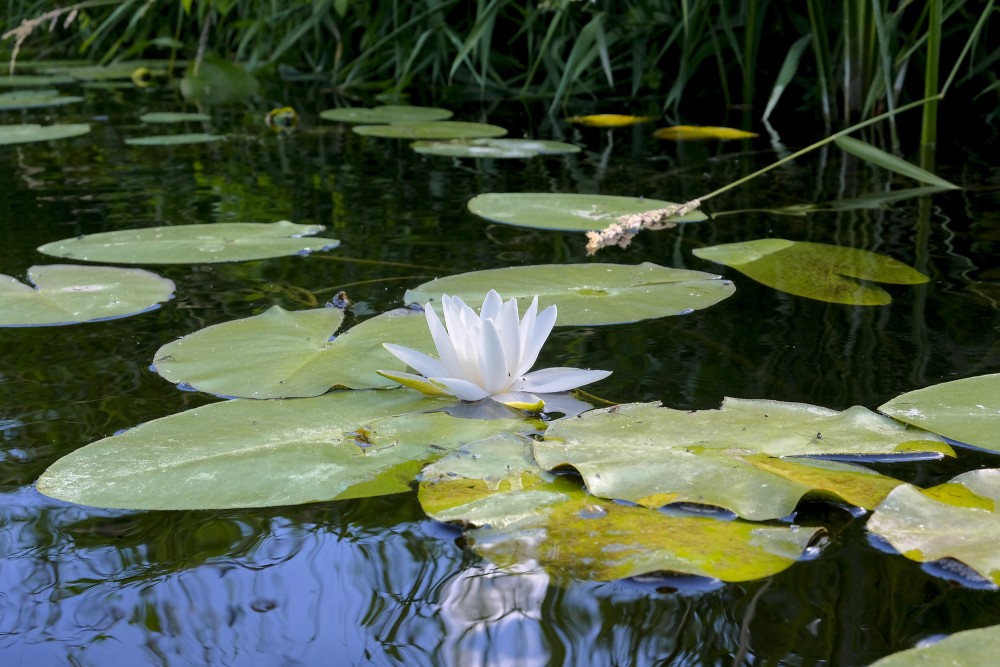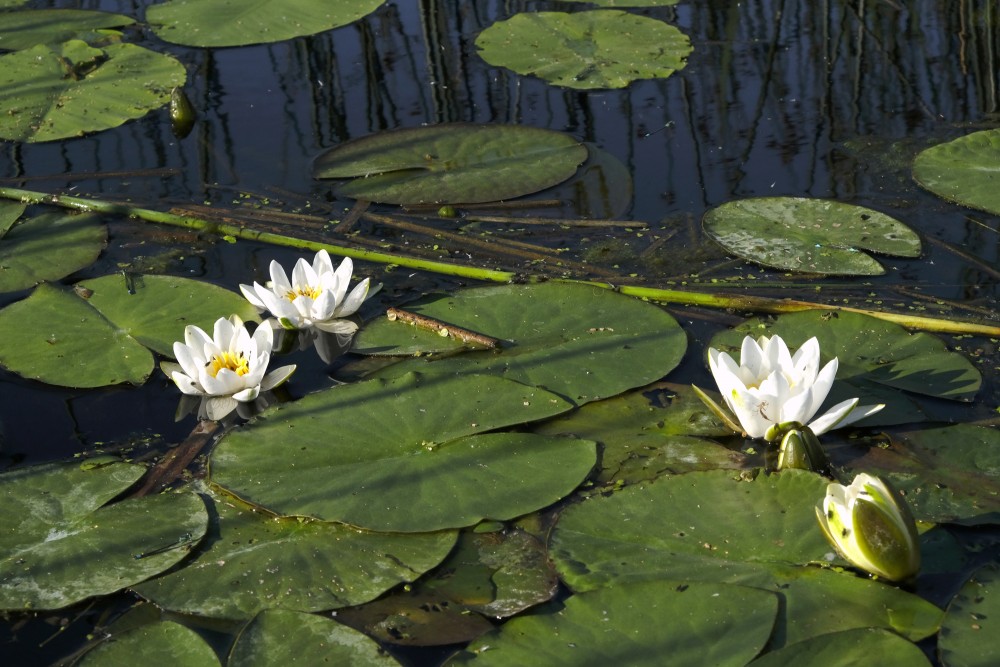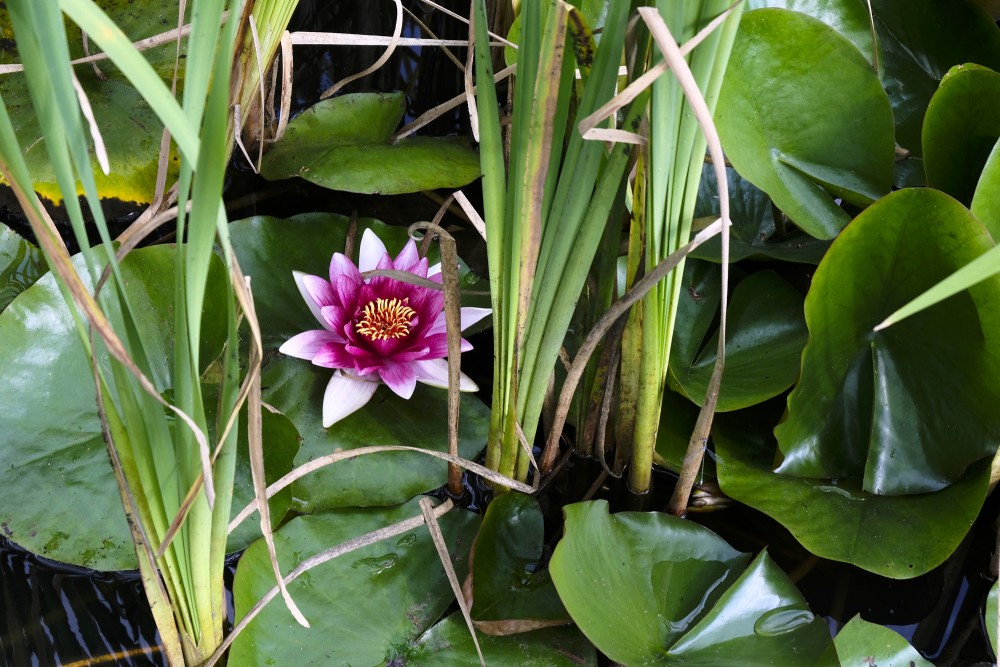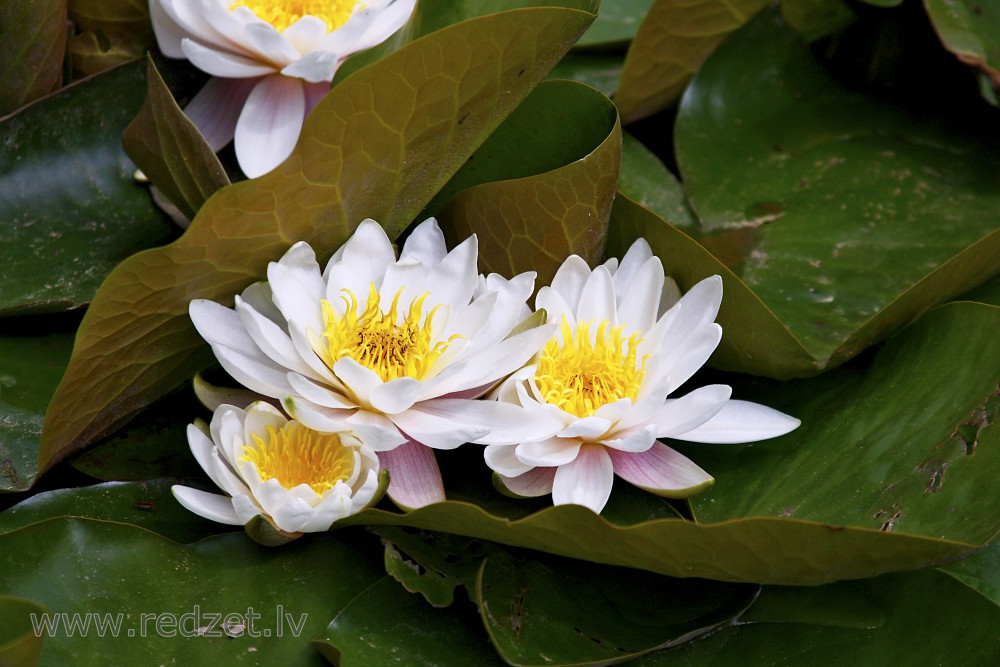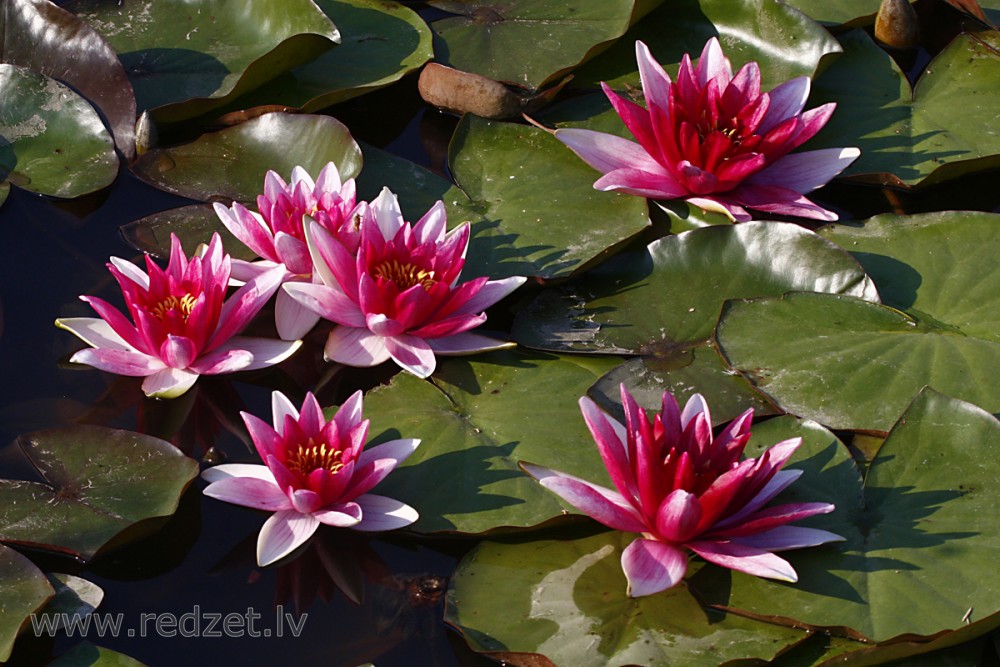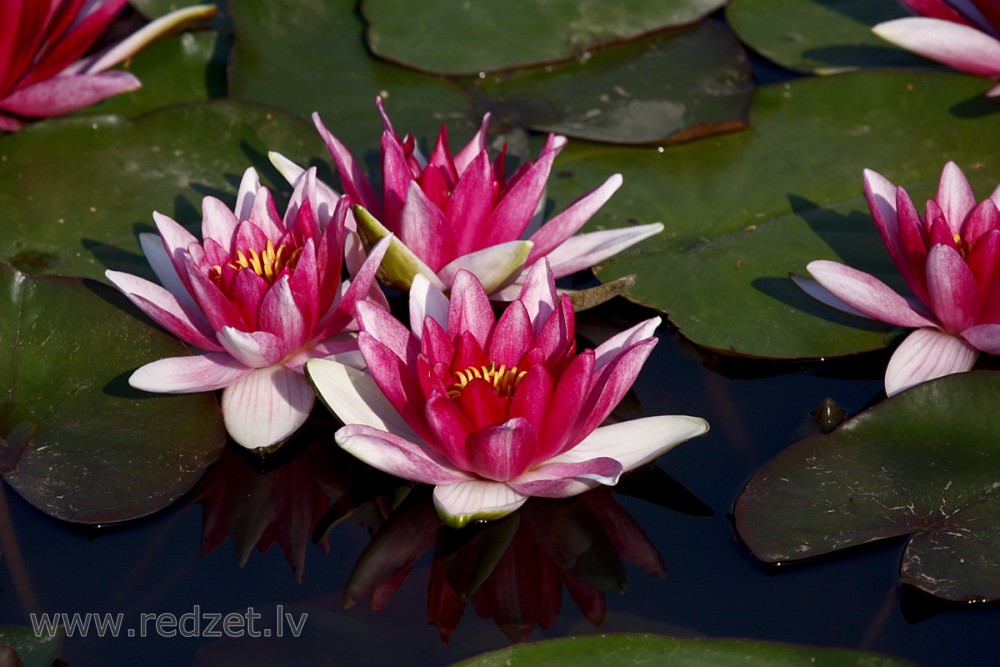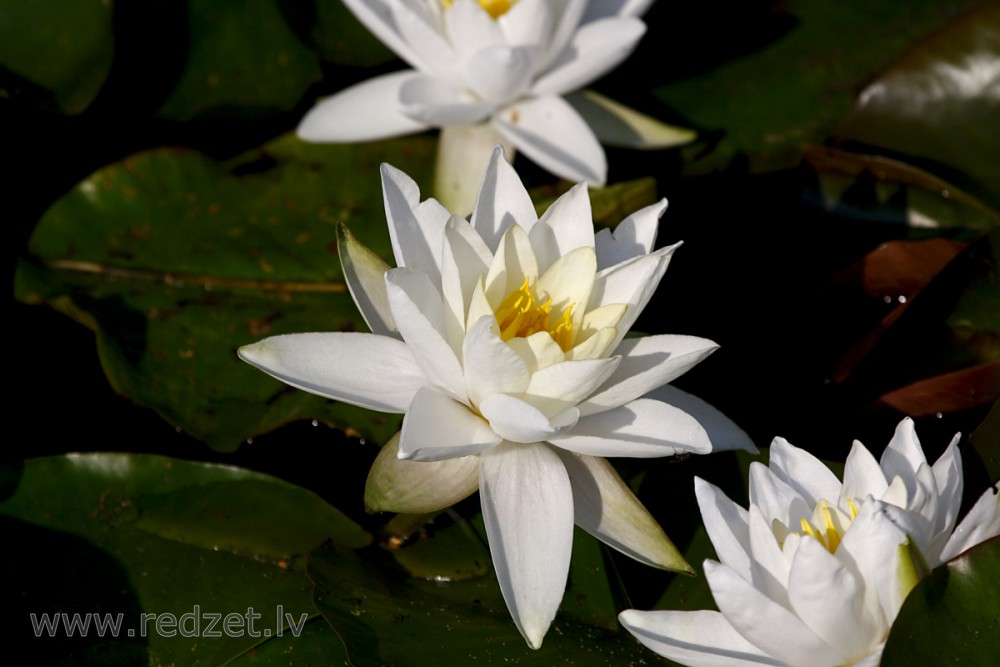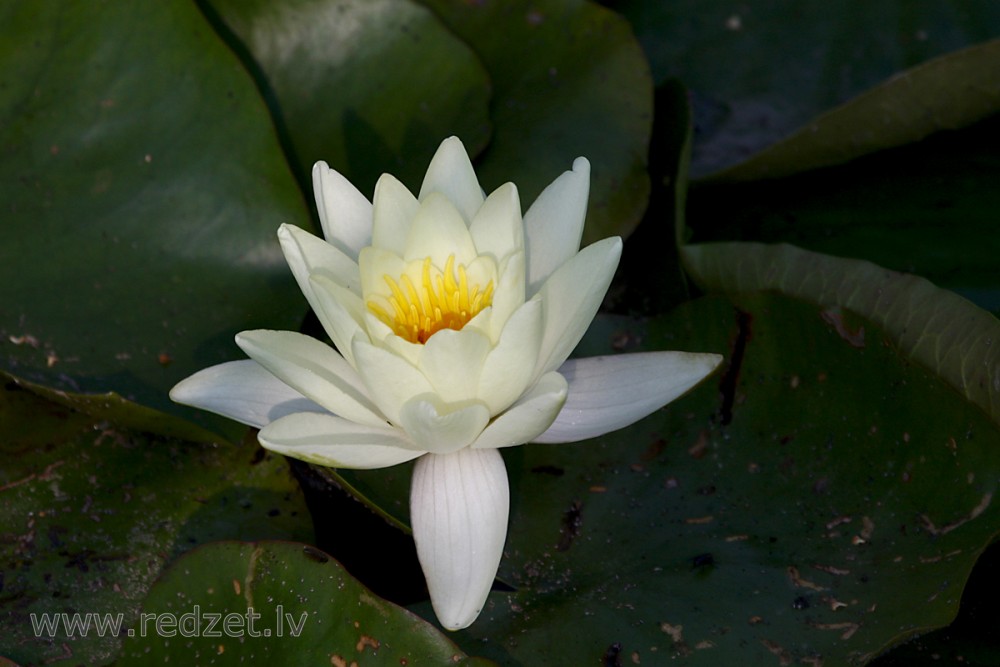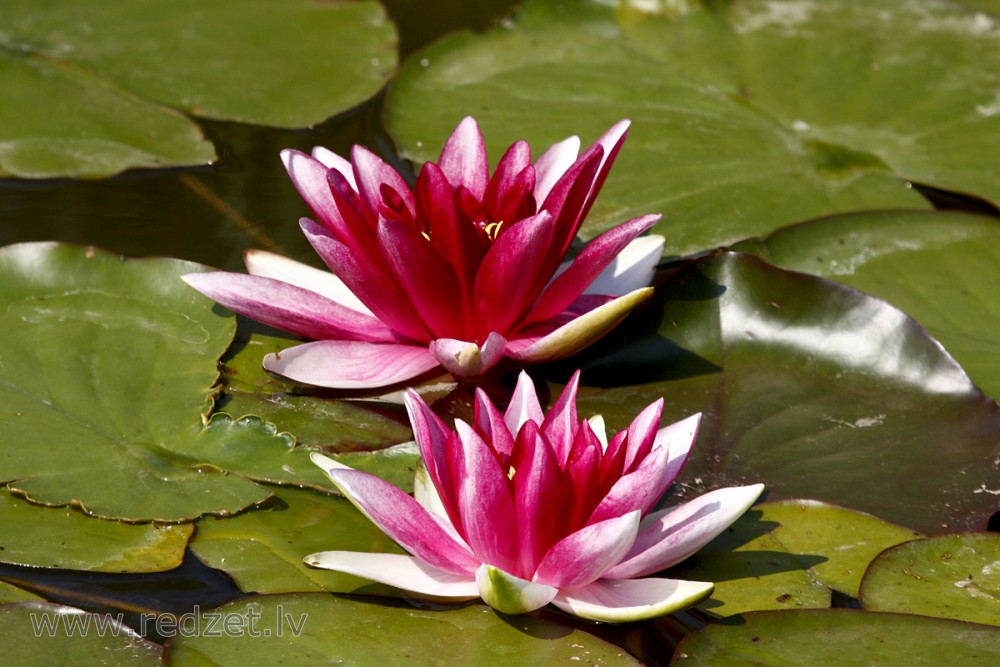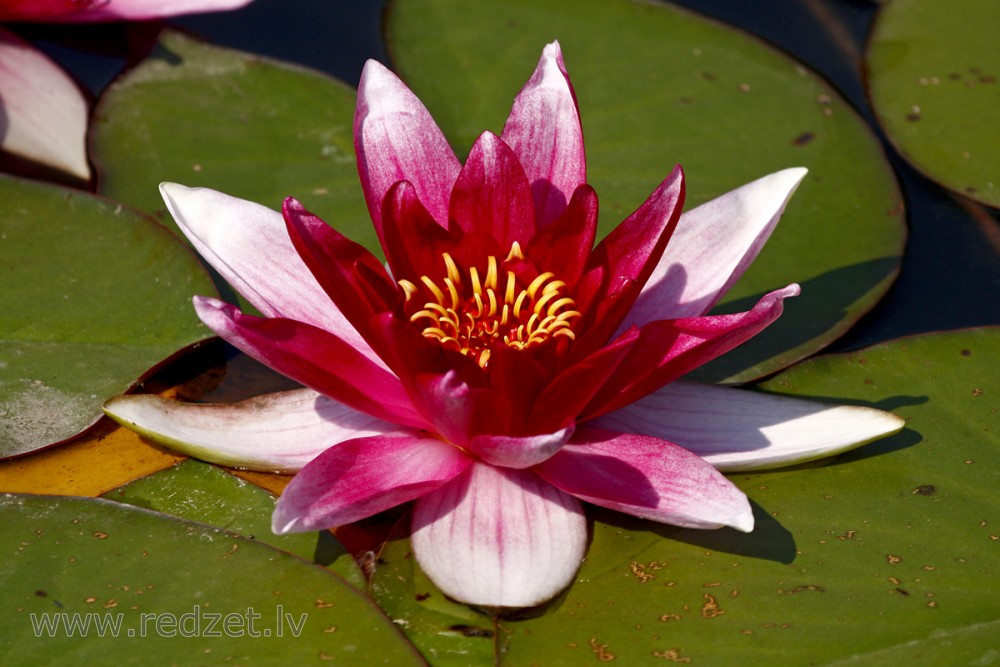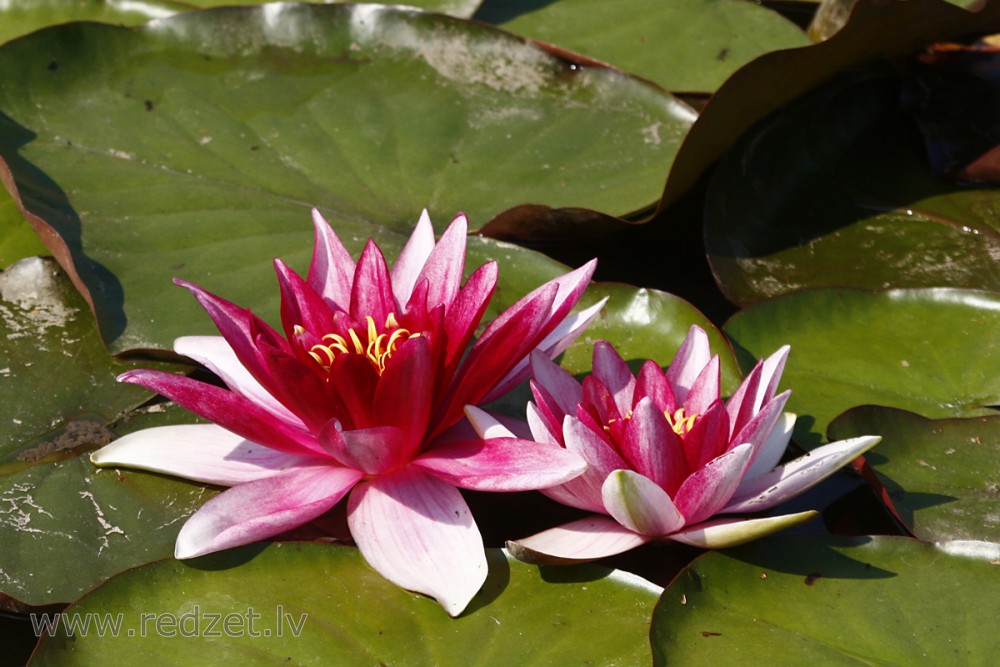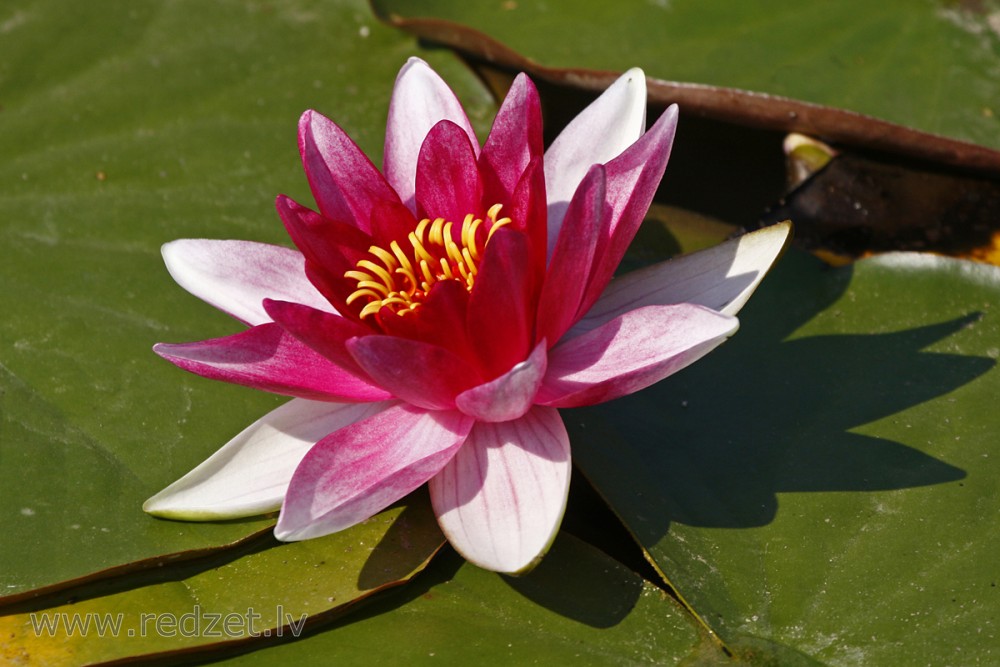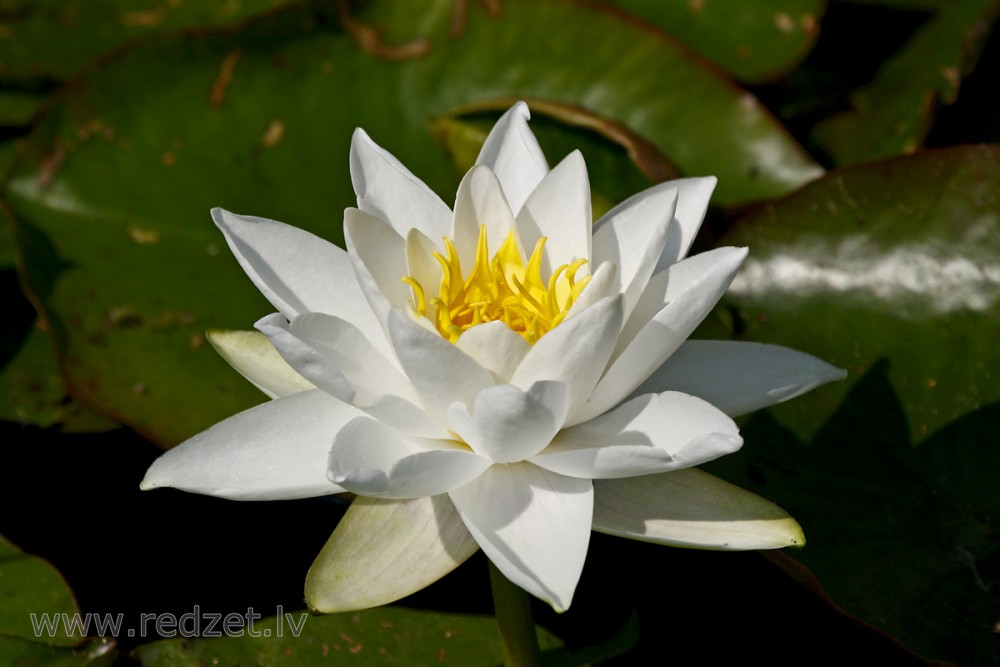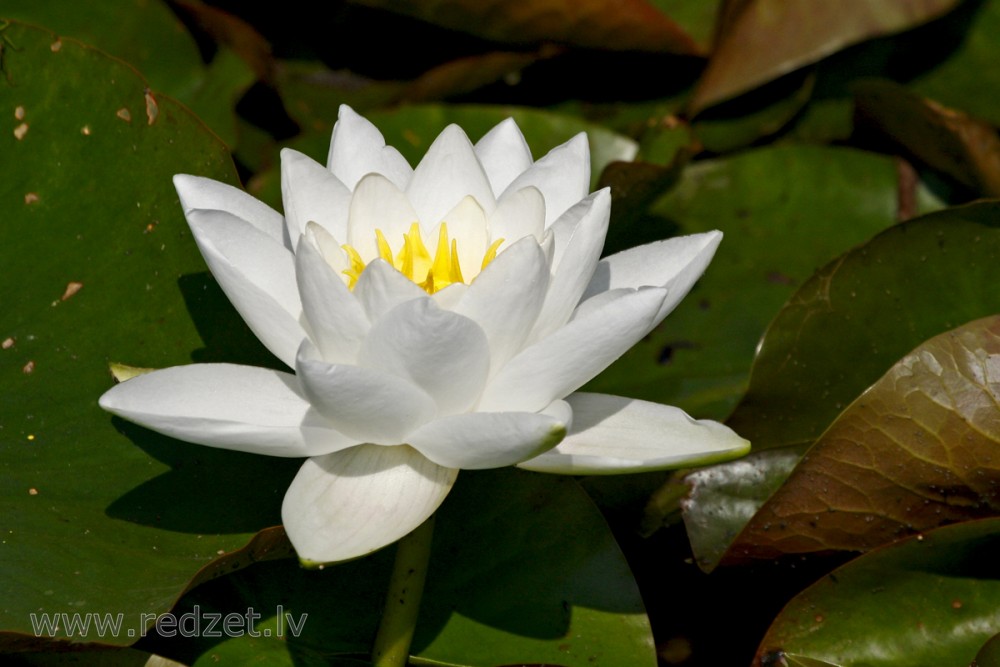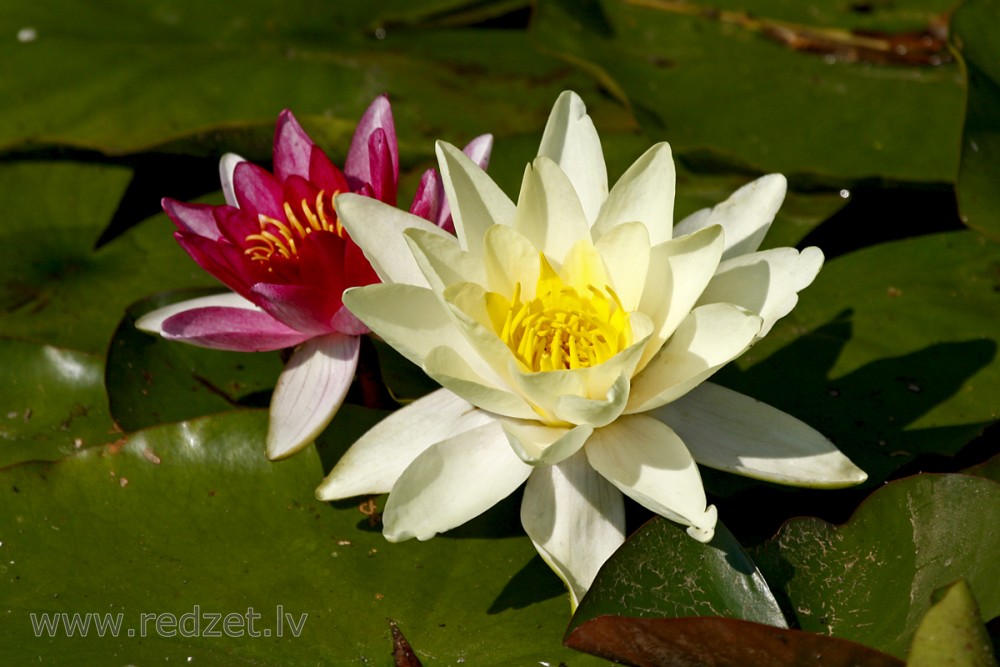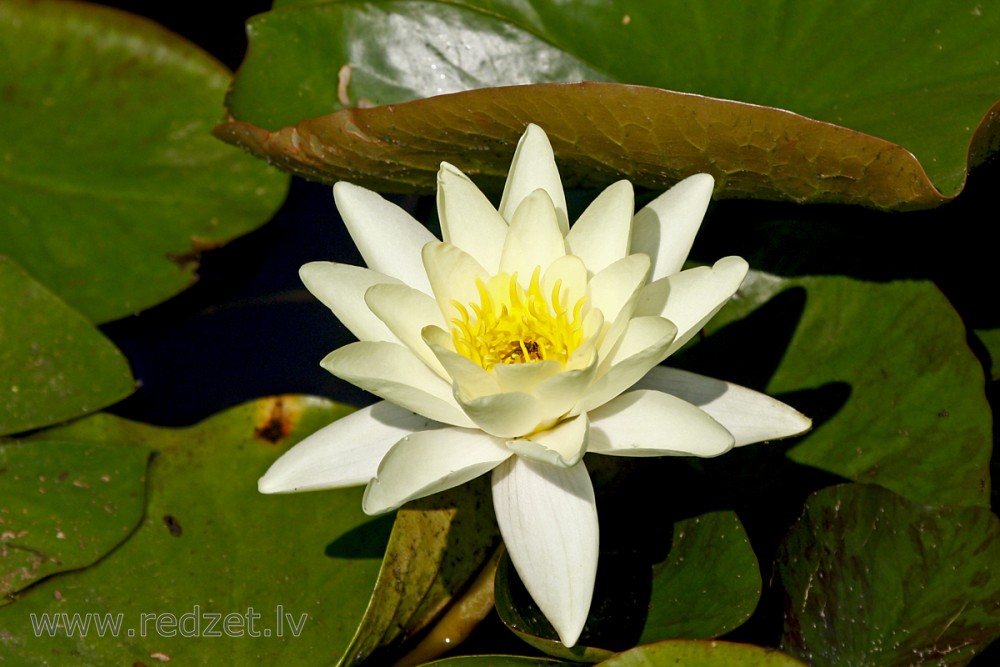Water lily (Nymphaea)
Nymphaea is a genus of hardy and tender aquatic plants in the family Nymphaeaceae. The genus has a cosmopolitan distribution. Many species are cultivated as ornamental plants, and many cultivars have been bred. Some taxa occur as introduced species where they are not native, and some are weeds. Plants of the genus are known commonly as water lilies, or waterlilies in the United Kingdom. The genus name is from the Greek νυμφαια, nymphaia and the Latin nymphaea, which mean "water lily" and were inspired by the nymphs of Greek and Latin mythology.
Description
Water lilies are aquatic rhizomatous perennial herbs, sometimes with stolons, as well. The leaves grow from the rhizome on long petioles. Most of them float on the surface of the water. The blades have smooth or spine-toothed edges, and they can be rounded or pointed. The flowers rise out of the water or float on the surface, opening during the day or at night. Many species of Nymphaea display protogynousflowering. The temporal separation of these female and male phases is physically reinforced by flower opening and closing, so the first flower opening displays female pistil and then closes at the end of the female phase, and reopens with male stamens. Each has at least eight petals in shades of white, pink, blue, or yellow. Many stamens are at the center. Water lily flowers are entomophilous, meaning they are pollinated by insects, often beetles. The fruit is berry-like and borne on a curving or coiling peduncle.
Cultivation
Water lilies are not only decorative, but also provide useful shade which helps reduce the growth of algaein ponds and lakes. Many of the water lilies familiar in water gardening are hybrids and cultivars.
en.wikipedia.org
https://en.wikipedia.org/wiki/Nymphaea
Continue reading